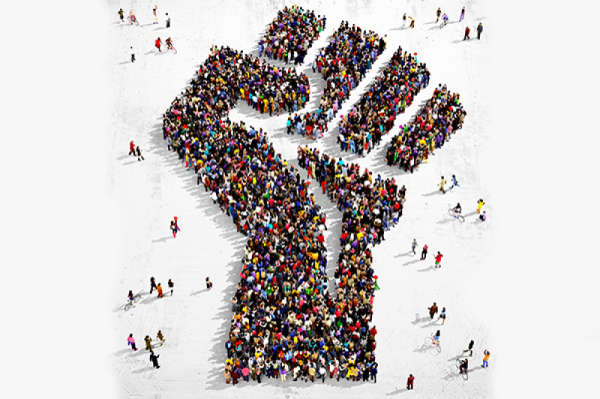Social media's role in activism can be credited to areas like these
Activism through social media has had an historical impact. Some consider social media to be what television was for the Civil Rights Movement, a chance to see what's going on and join the fight. On the other hand, many others agree with
Shonda Rhimes, "a hashtag is not a movement…A hashtag does not change anything…It's you, sitting on your butt, typing on your computer and then going back to binge-watching your favorite show." That may be true for some but the overall impact of social media on activism is undeniable.
Social media's biggest contribution for activists is its ability to spread a message to millions of people in a matter of seconds. All the movement needs is a hashtag despite Rhimes belief. A hashtag and people willing to take their online action offline. The following hashtags prove how impactful social media is, especially in areas immediately unaffected by the reason for the fight.
Abilene-Sweetwater, TX – #OccupyWallStreet
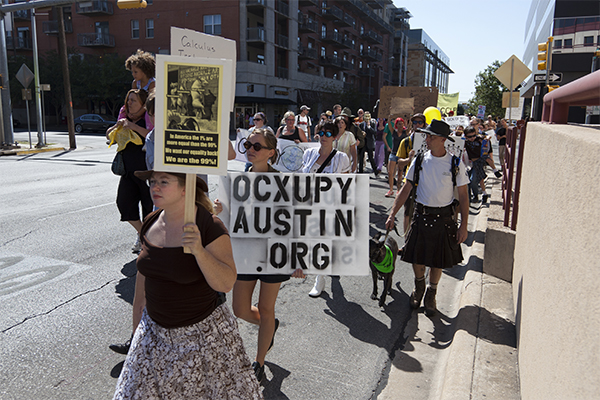
The movement began September 17, 2011 even though it was mentioned online months before. Prior to going viral, the founding group spent time meeting in parks and uploading videos for their cause. They had 90,000 subscribers before their first rally but their media presence began to expand when hactivist group Anonymous started reposting information on their news sites. Anonymous also uploaded a video describing where and how they would occupy Wall Street. This led to over 2,000 people occupying Zuccotti Park in Lower Manhattan near Wall Street. Mainstream media coverage of the protest took off when protestors were arrested at the demonstration on the Brooklyn Bridge. After videos of the arrests were uploaded, the hashtag became an international phenomenon.
People across the country began to follow suite and occupy places in their areas. According to Google Trends, the topic Occupy Wall Street sparked more conversation in Texas, specifically Abilene-Sweetwater, than it did in New York. The conversation in the Abilene-Sweetwater metropolitan spread to Austin, Dallas and Houston. Occupy movements and demonstrations, such as the Occupy Austin chapter, began to take place at City Hall. Occupy Austin went as far as creating their own website with a list of demands. Their demands align with the goal of the Occupy movement - to fix the issue of income inequality and remove the corporate world's effects on politics. It's safe to say the Occupy movement was a success because it led to an increase in minimum wage for 19 states.
Here, social media is credited with spreading the message and showing the fight to millions of people. Nearly six years later, the conversation is still alive; there are four unique tweets per hour. Without the support of the Abilene-Sweetwater metropolitan, states and their movements, there may not have been a solution at all.
Los Angeles, CA – #OscarsSoWhite
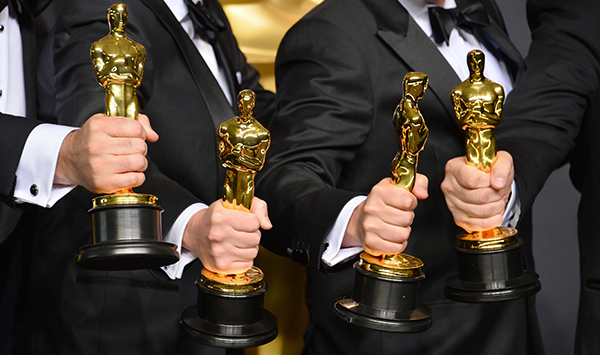
Like Occupy Wall Street, social media is credited with spreading the message but in this cases, it is directly responsible for change. #OscarsSoWhite started in 2015 by editor and published writer, April Reign. It became popular again in 2016 but much more than before. It was the second year in a row were all Academy Award nominees were white. Many people began to use the hashtag but actors, actresses, and directors used it to voice their opinion and their decision to boycott the award ceremony. The most notable to do so were Spike Lee, Jada Pinkett Smith and Will Smith. In response to the fury by others in the film industry and fans nationwide, the Academy voted to double its female and minority members by 2020. Former president of the Academy, Cheryl Boone Isaccs, credited #OscarsSoWhite as the force that pushed them to make a change. Besides the celebrity response, it's no surprise the hashtag spread like wildfire. Los Angeles' 3.98 million people spread the trend like a hot potato.
Boston, MA – #ALSIceBucketChallenge
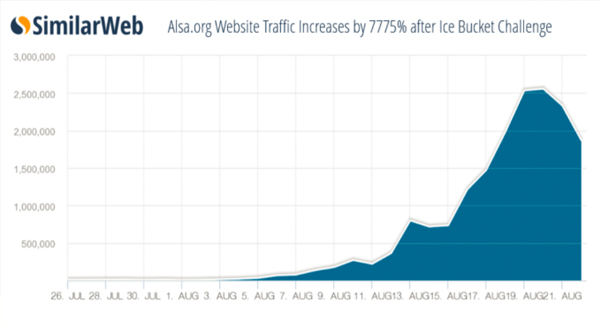
In 2014, Boston had a small population (659,180) compared to Los Angeles but Margaret Mead says it best, "Never doubt that a small group of thoughtful, committed citizens can change the world; indeed, it's the only thing that ever has." All it took was the support of friends in Boston to help Pete Frates' #ALSIceBucketChallenge go viral. Everyone from the average American to multi-millionaire CEOs such as Mark Zuckerburg (Facebook) and Tim Cook (Apple) participated in the challenge. According to Facebook, more than 17 million people uploaded videos. Participating in the challenge was one part, donations were the other. A year before the challenge, the ALS Association raised $2.5 million in the month of August. Thanks to the challenge, the organization raised $70.2 million in August 2014 alone. According to the ALS Association, a total of $115 million was donated in a matter of months.
Minneapolis-St. Paul, MN – #BlackLivesMatter
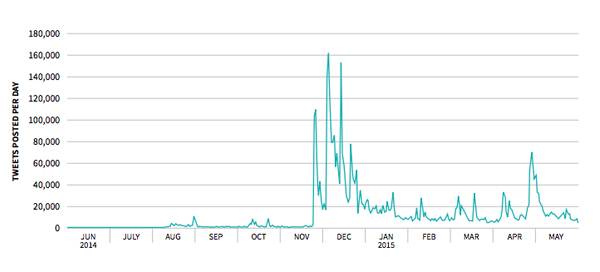
Unlike the previous two, the Black Lives Matter movement isn't concentrated in a specific area. Instead, it is in every area where police brutality and social inequality is present. The hashtag broke ground after George Zimmerman was acquitted for the murder of Trayvon Martin in 2013. Yet, like #OscarsSoWhite, the hashtag didn't trend until the second widely covered death of a young black man, Michael Brown. When the grand jury declined to indict the officer who killed Brown, #BlackLivesMatter took flight. Afterwards, each incident like Martin's or Brown's added more fuel to the movement's fire.
Despite the deaths of Martin and Brown being in Florida and Missouri, the Minneapolis-St. Paul metropolitan area carried the torch in keeping the movement's popularity afloat. Black Lives Matter became an internationally known activist movement with chapters forming across the nation and in Toronto, Canada. The Minneapolis chapter fully embodied the movement's core principles when they rallied for Justine Damond, a white Australian woman who was shot by a black Somali police officer. Demonstrations like those for Damond, Walter Scott, Sam DuBose and more, as well as the online presence of the movement led to major changes on college campuses and within social media itself.
Younger and older generations communicating and collectively organizing offline demonstrations changed social media to an essential tool. As of today, Ritetag reports there are still 233 unique tweets per hour with #BlackLivesMatter. That number may steadily increase due to the demonstrations taking place in #Charlottesville.
#Charlottesville, VA
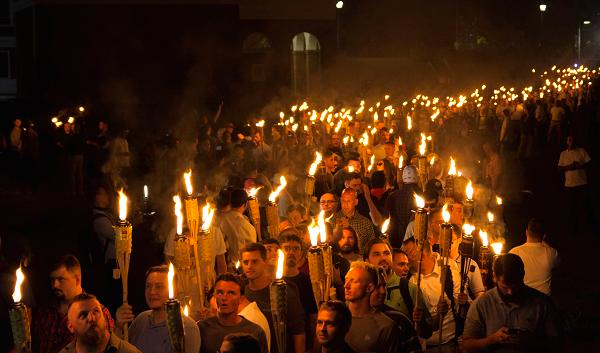
Protesting the removal of General Robert E. Lee's statue in Emancipation Park, Jason Kessler used social media to organize far-right and alt-rightists. Far-right and alt-rightists are generally white nationalists. In this case, they fought the removal of the statue because some identify it as a piece of their heritage. Kessler states Unite the Right's fight is "about white genocide. It's about the replacement of our people, culturally and ethnically." This is the same reason for their earlier demonstrations in Charlottesville, Virginia. According to a police affidavit regarding the rally, police estimated at least 1,500 participants. All of which were gathered through social media. Those against the demonstration did the same and organized a counter-protest but violence quickly ensued.
Regardless of the outcome, social media can be credited here just as it was with the other hashtags – it spread the message better than word of mouth could. Currently there are 392 unique tweets per hour and 1,433 retweets per hour for #Charlottesville. That exposes the hashtag to 1.58 million people per hour according to Ritetag. Yet there are still arguments discrediting social media's role claiming it is a lazy form of activism.
Activism vs Slactivism
Social media and activism are sometimes referred to as slactivism because it does the bare minimum of spreading the message and sparking conversation. Often the opposing side blames social media for not initiating enough offline demonstrations. That is a trait of a purely online movement such as #OscarsSoWhite. Other than celebrities boycotting the award's ceremony, #OscarsSoWhite needed the conversations more than it did offline demonstrations. Conversations were enough to cause change.
#OccupyWallStreet and the #ALSIceBucketChallenge were viral because of their offline movements organized via social media. Their conversations started off as calls for action with millions responding. Responses matter because the message can fall on the right ears. Even if people go back to binge-watching their favorite show afterwards.
If there's any argument about the effectiveness of social media for activism, it should be about consistency. Consistent action draws the line between slactivism and activism. There's a new trend every couple of days that can easily overtake a purposeful trend's position because of inconsistency. Clear and constant communication is vital for activism. Without computers, there would be people in activist groups dedicated to oral and written communication. Social media allows everyone to communicate but those voices must be followed with action for social media's role to continue to be impactful. Otherwise, hashtags will lose their power in being the driving force for collective action and historical change.
4417


